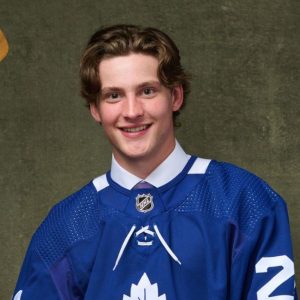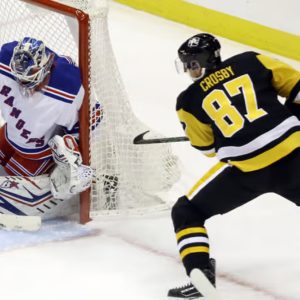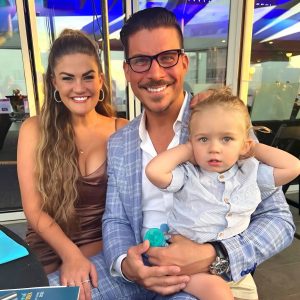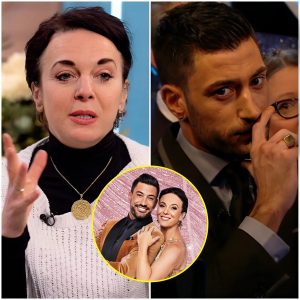After a long week (eight days, in fact) at USA Hockey Arena in Plymouth, the 2024 World Junior Summer Showcase concluded Saturday afternoon: Four-practice or two-game days that run together, American lineups mixed and matched, Canada deigning to bus in from Windsor for the final two days.
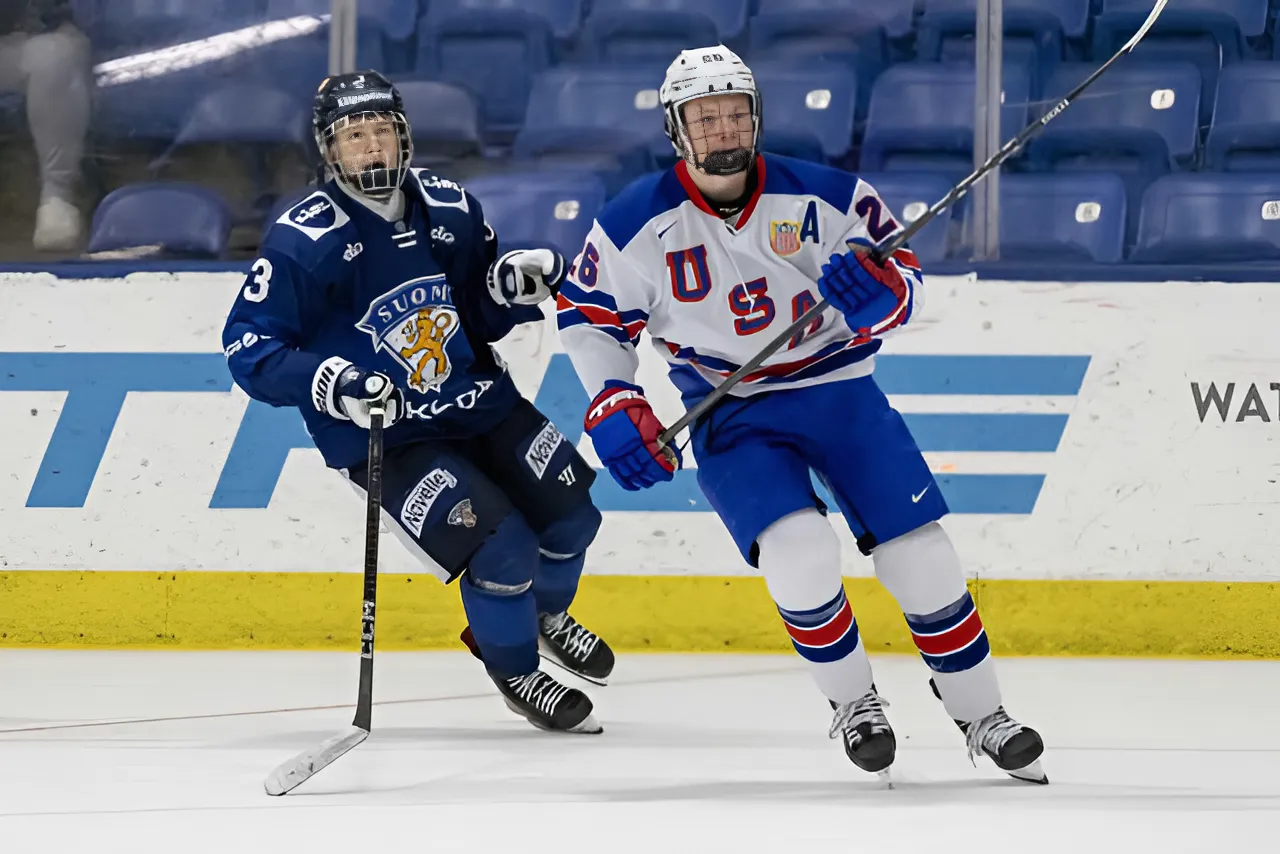
The week’s final game, the United States vs. Canada, was, without question, its best, far better than an August 3rd hockey game has any business being—energetic, unmarred by the incessant penalties and legless back checks that tend to sully the summertime game, while passing not without animosity between belligerents. The biggest reaction from the crowd (the week’s largest and most boisterous, with Canadian fans perhaps outnumbering the hosts’ supporters) came when American goaltender Hampton Slukynsky knocked a Canadian skater to the ice in overtime.
The game wasn’t just too good for its date but also too good to be settled in a shootout, but unfortunately, such was its fate, with Slukynsky and Brodie Ziemer providing the difference for Team USA to clinch a 5-4 result.
Here are a few observations from the week in Plymouth, from Red Wings participation to a look ahead at Team USA’s roster, and a word of appreciation for the Finns.
The Red Wings
Lalonde’s Cameo with Old Friend Carle
All week, Detroit coach Derek Lalonde joined David Carle (whose day job is behind the bench at the University of Denver, where he has won two of the last three NCAA national championships) behind Team USA’s bench.
Lalonde has been an assistant on the last two American World Championship staffs and also served as an assistant than as head man at the 2012 and 2013 World Junior A Challenges. When asked why he’d come out to join Carle for the week (which he also did a year ago), Lalonde noted that he could never say no to USA Hockey.
That it was Carle who asked only increased that imperative. As an assistant, Lalonde recruited Carle to Denver, then honored his scholarship after a heart condition forced him to retire from playing. Carle’s coaching career effectively began while still a DU undergraduate. His first formal coaching gig came on Lalonde’s staff with the USHL’s Green Bay Gamblers.
Having led last year’s U.S. WJC team to gold in Sweden and won two national titles at the ripe age of 34, Carle’s eventual progression on to an NHL job is more a question of when than if. Given his résumé, it’s not hard to imagine that Carle would enjoy the luxury of some choosiness with respect to his preferred destination. Of course, there’s no rush, and he clearly has an excellent job at DU, but there would also inevitably be another blue blood NCAA job waiting for him on the other side if he wanted, regardless of the NHL outcome.
When asked about the differences between coaching at the collegiate and professional levels, Lalonde gushed about Carle’s potential: “He could coach at any level. I tell him all the time, it is a little bit different in the National Hockey League. He’d probably need to dip his feet in it just to understand it’s a little more of a partnership if you will. But honestly, he would figure it out…People just see the national championship. His first national championship [these things need to be distinguished with Carle], people didn’t see what he did the year before and talking to him often, he had to revamp his whole leadership. There were some challenges, they had COVID, there was a culture that he was in the process of changing, and then the following year they were winning the NCAA Tournament. That’s where David is just really cerebral, next level understanding the big picture and the process. Really impressive human being.”
Lalonde added with a smile, “it’s a weird relationship” given the 17-year age gap between the two: “I’d like to think big brother, because I don’t want to age myself.” Lalonde’s relationship with Carle is more than professional. While at DU as a student, Carle was a regular at the Lalonde’s dinner table, and he remains in touch with Lalonde’s children to this day.
Trey Augustine
Come December, Trey Augustine will go to his third World Junior for Team USA. It’s no small feat for any player and remarkable for a goaltender to not just be on the roster but play in three WJCs. Carle opted to dismiss his returning players from camp early, so it was a light week for Augustine. He played once, against Sweden, stopping all 11 shots he faced in two periods. For Carle, Augustine’s steadiness will be a blessing.
“It’s nice to have the familiarity with him,” Carle said. “Mature kid, winner, leader amongst the group in a lot of ways. I think to see him—he just has another level of pedigree to him now with winning a year ago, and so to have him back [as] that stabilizing force in goal is a huge asset for us.”
Max Plante
Entering the week, I estimated Plante as a likely member of this team but far from a certainty. After the week, I’d still probably stop just short of ‘lock,’ but it was an impressive performance that saw him play a lot of minutes in important spots and varied roles.
Carle was impressed by the way Plante fit in early on a loaded USA PP featuring all the team’s top projected gunners: Zeev Buium, James Hagens, Gabriel Perreault, and Ryan Leonard. “To play with players of that caliber, sometimes there can be a level of pressure that comes with it. I don’t think we saw that today,” Carle said on the opening day of the showcase. “You know, if you’re playing with Ovechkin, you feel like you gotta put every pass in the perfect spot. As a player, there can be that level of pressure where you want to be perfect. And we have really good players on this team, and him being the younger guy playing with three of the guys on the team a year ago, there can be that little bit of pressure. But again, I didn’t see that today.”
Plante’s calling card is his tactical intelligence or hockey sense/IQ, but he continues to make clear that doesn’t come at the expense of speed. Team USA has established itself as the best men’s under-20 program in the world through speed, and if you couldn’t skate, it’d be awfully hard to fit in. Clearly, that’s no problem for Plante.
“I knew the hockey sense, world-class IQ,” Lalonde said of Plante. “What I was really taken (aback) from at development camp and my time here is how (much) better he skates than I probably anticipated, and how strong he is on the skates. I think he’s going to be a really, really nice player. Really good job by our staff.”
John Whipple
What stood out from every John Whipple appearance this week was his eagerness to defend and his aptitude for it. “I think just as I’ve grown up, I’ve seen how much that matters, and if you can be a guy like that, and you can get in front of a lot of pucks, you can be very appreciated and help the team out a lot. [I] just kinda take it in as my own and take pride in it,” Whipple told The Hockey News, when asked about his acumen for shot blocking.
He is physical in clearing the crease and killing plays along the boards, while managing a tight defensive gap. It’s clear at a young age he is finely attuned to the details of stick placement when defending in zone or off the rush.
“Willingness to defend, does it with a smile on his face actually, and I think really enjoys it,” Carle offered, when asked what stands out about Whipple. “I thought in the first game he found the middle of the rink a couple of times, had some really nice clean breakouts, but you see his closing, feet, how sturdy he is, he can separate people, and there’s a lot to like in his game.”
Whipple is realistically a long shot to make this year’s USA team, but you can see the case for it in the way he brings a distinct profile from some of the team’s better known D men. “You can’t have a D corps with six Zeev [Buium]s or six Cole [Hutson]s,” said Carle. “You need some guys who play the game a little bit differently, and I think John’s one of those guys trying to showcase himself that he can do that.”
Whether he plays for Team USA or not come December, Whipple will be a valuable addition to the University of Minnesota, whose defense corps took a significant step back last year, especially in its own zone, from the national runner up squad of the year prior.
Jesse Kiiskinen
Kiiskinen—acquired just in June and unable to attend development camp due to compulsory military service—was perhaps the biggest point of intrigue from a Red Wings perspective entering the week. Kiiskinen wore the “C” for the Finns and played a quintessentially Finnish rugged third line role. He played in all situations, including as the net front player on the Finnish PP, where he scored a pretty between-the-legs goal on the final day of competition in a win over Sweden.
“He has good character,” Finland coach Lauri Mikkola told The Hockey News. “He is a good person and just a little bit leader in the locker room there. He has lots of giving for the team.”
Despite the highlight reel goal, I don’t see Kiiskinen as a prospect with an exceptionally high ceiling. It’s a bit difficult to picture him playing top six minutes in the NHL. With that said, it’s not at all difficult to imagine him as a useful NHL player. As Mikkola’s remark suggests, Kiiskinen does a lot to endear himself to a coaching staff, and those are qualities that will eventually serve him well in looking to lock down an NHL role.
Looking Ahead to Team USA
Entering camp, it seemed almost inevitable that the U.S. would experience some measure of regression from last year’s gold medal winners. Though there are of course some prominent returners (Augustine not least among them), the matriculation of Will Smith, Frank Nazar, Gavin Brindley, Cutter Gauthier, Rutger McGroarty, Lane Hutson, and Seamus Casey left an overwhelming amount of starpower to replace.
After a week up close, I see an excellent spine down the middle available to Carle in the present American crop between James Hagens (whose vision and poise are almost uncanny), Oliver Moore (a spectacular skater with an excellent skill set for Carle’s system), Carey Terrance (simple, reliable, a dependable puck transporter if not scorer), and Chris Pelosi (not a lock for this role or roster and a slightly awkward skater, but smart and defensively reliable enough to seem a good fit).
In returning Boston College Eagles Gabriel Perreault and Ryan Leonard, Carle has two impact wingers at the top of the lineup. The latter is a physical force, whose adoration for contact and aptitude in driving the net stood out at last year’s WJC and in BC’s run to the national championship game. He looked in utter command of the ice throughout his time at camp. Perreault, meanwhile, will be perhaps the most dynamic attacker (with the possible exception of Hagens) available to Carle. Born, like his father Yanic, in Sherbrooke, Quebec, I found myself wondering as to when the last Quebecois prospect as enticing as Perreault (who of course represents the U.S., where he grew up, internationally). The obvious answer is Alexis Lafreniere, and Perreault was drafted by Lafreniere’s Rangers. However, despite Lafreniere’s progress this season, I think it’s fair to say Perreault’s prowess as a scorer leaves open the possibility of a higher ceiling.
I do have some questions about the Americans’ depth on defense (which is part of the reason I would say Whipple remains at least a possibility), and I suspect they will have to grind out results (particularly in the bottom six with players like Pelosi, Noah Powell, and Ziemer, who may well work his way farther up the lineup) where last year’s Americans could blow an opponent clean out of the water. However, with Carle behind the bench and Augustine in net, the Americans must be taken seriously as a gold medal contender.
Statement Fins
I can’t seem to watch international hockey without becoming enamored with Finland. At games and practices, they are relentlessly fast—vertical, aggressive, physical—and they wear a tremendously cool logo, all while the language’s unique etymology and a lack of nameplates on jerseys obfuscates the individual for the collective to the casual Anglophone viewer. Of course, I want to tread cautiously around these tropes, but sport is cultural, and the Finnish style could be obviously identified on the ice without the sword-bearing, crowned lion on the jersey’s crest.
Three Finns I particularly enjoyed this week are Emil Kuusla, Aatos Koivu, and Kalle Kangas. Kuusla, undrafted this year and eligible again in 2025, didn’t see an interaction with an opponent he didn’t want to inflame all week. While he took a few penalties of his own, he drew more, and he was an incessant agitator, who helped breathe life and intensity into each game he played. And this agitation didn’t come entirely at the expense of skill. He uses the puck well, with a good instinct for when to attack and when to play for possession. Koivu—son of Saku, nephew of Mikko, third round Canadiens draft pick—is a natural shooter and remarkable skater. He showed excellent poise and edgework as a puck carrier. Kangas (a 2023 seventh round pick of the Pittsburgh Penguins) is a massive and nasty defenseman with more than serviceable skill as a skater and puck mover. He looks like an excellent high upside, late round draft choice.
It’s not as though the Finns steamrolled their way through the week, but, particularly if Konsta Helenius (selected 14th by the Sabres this year) joins them come tournament time, they will be a serious medal contender and threat for gold.
